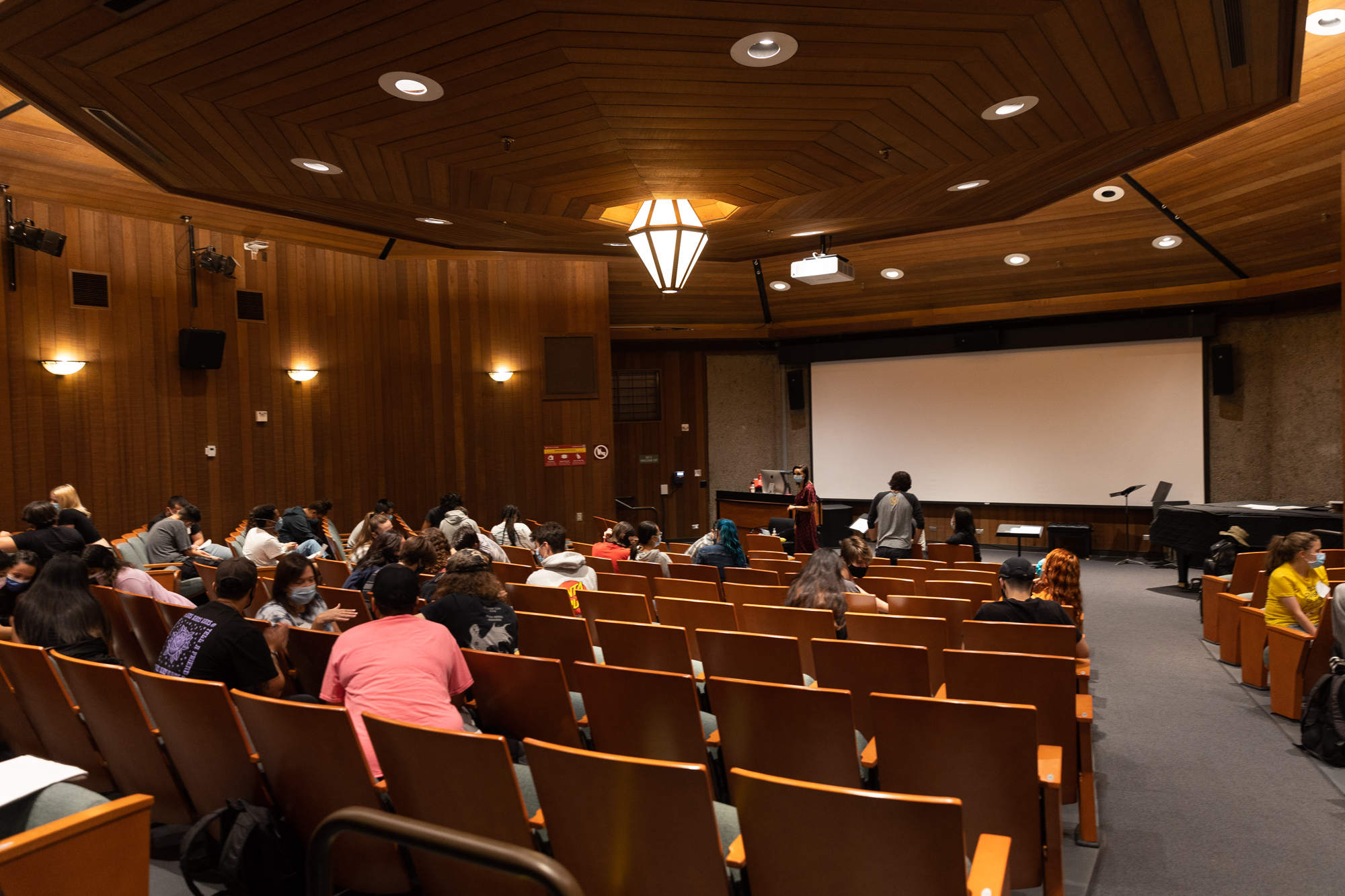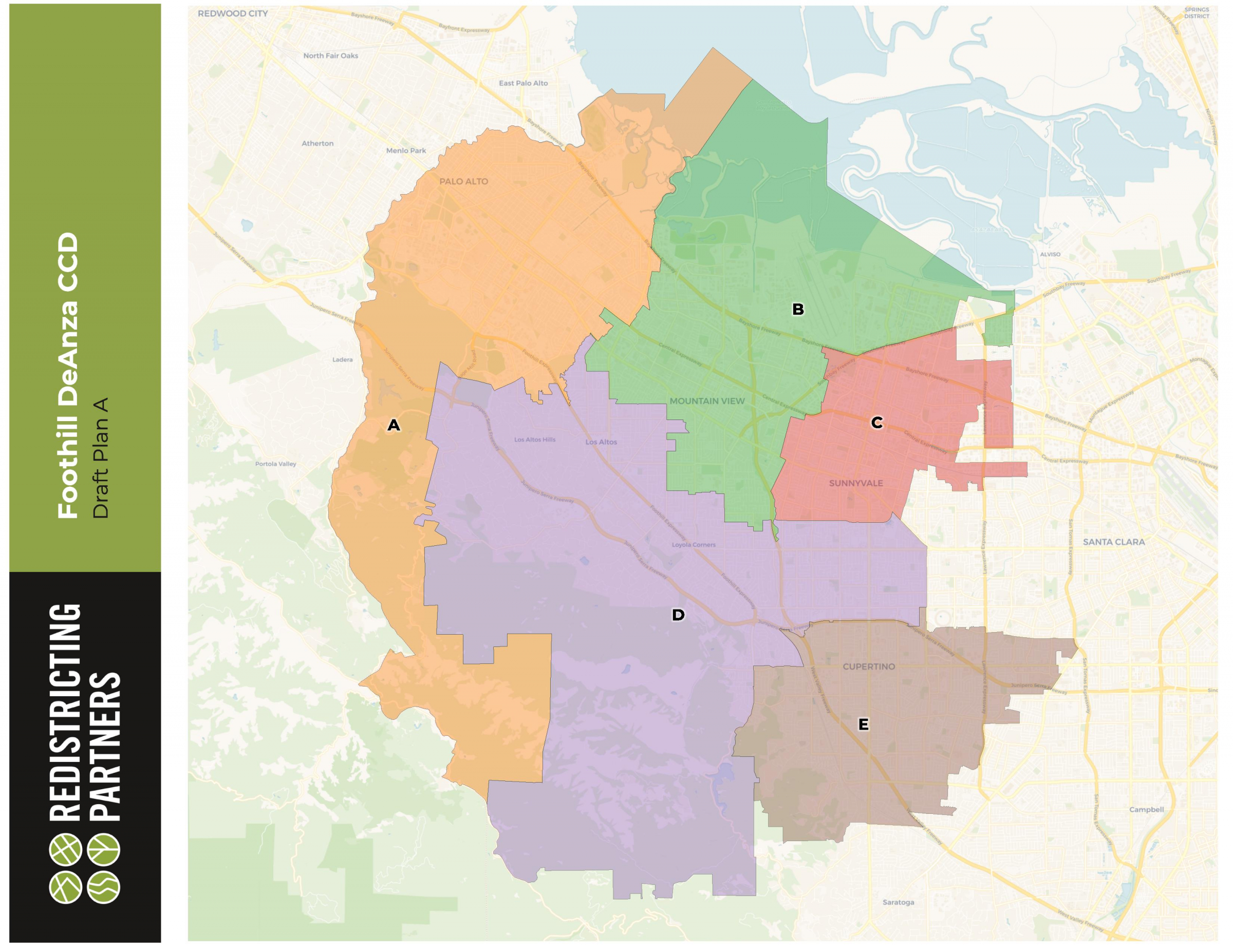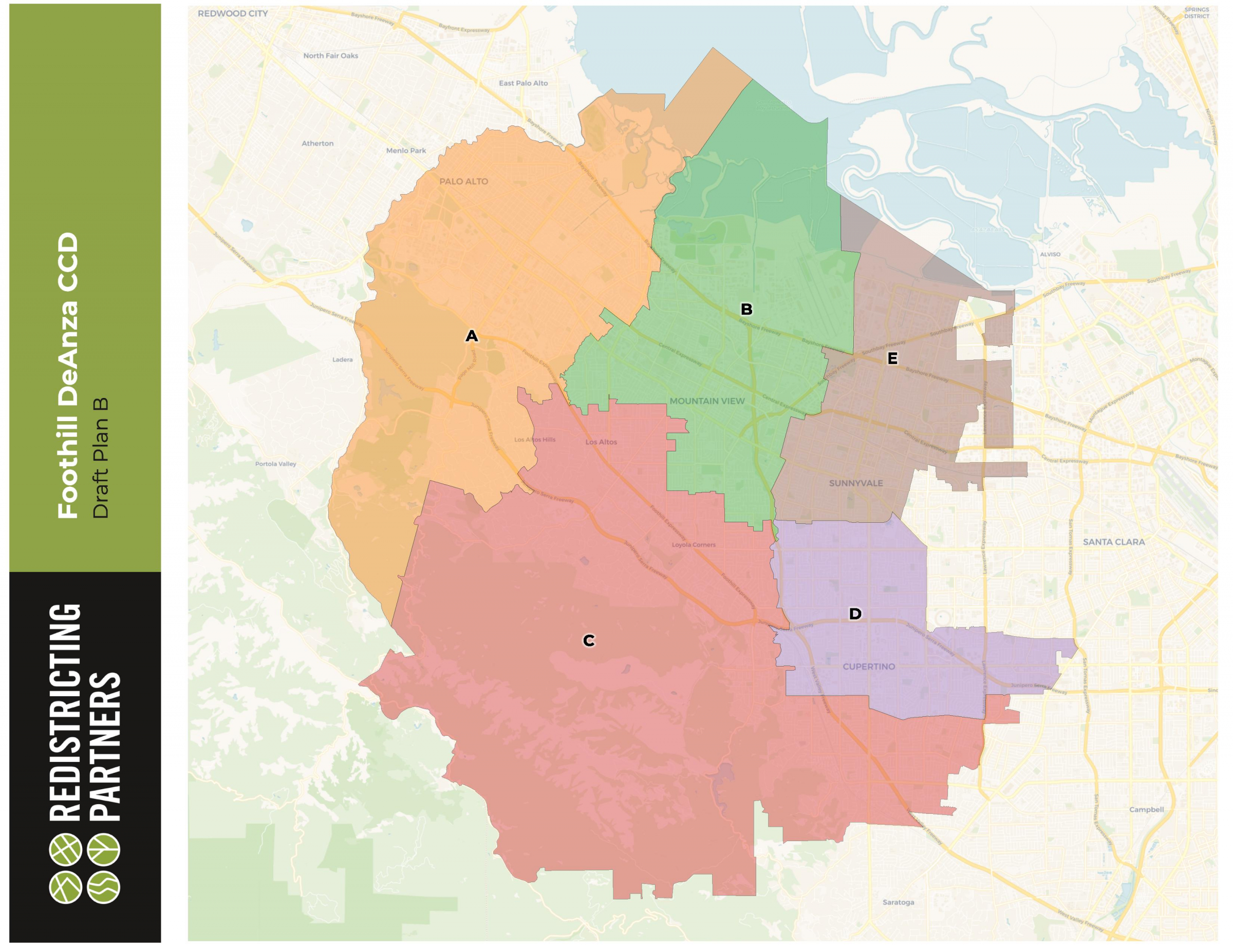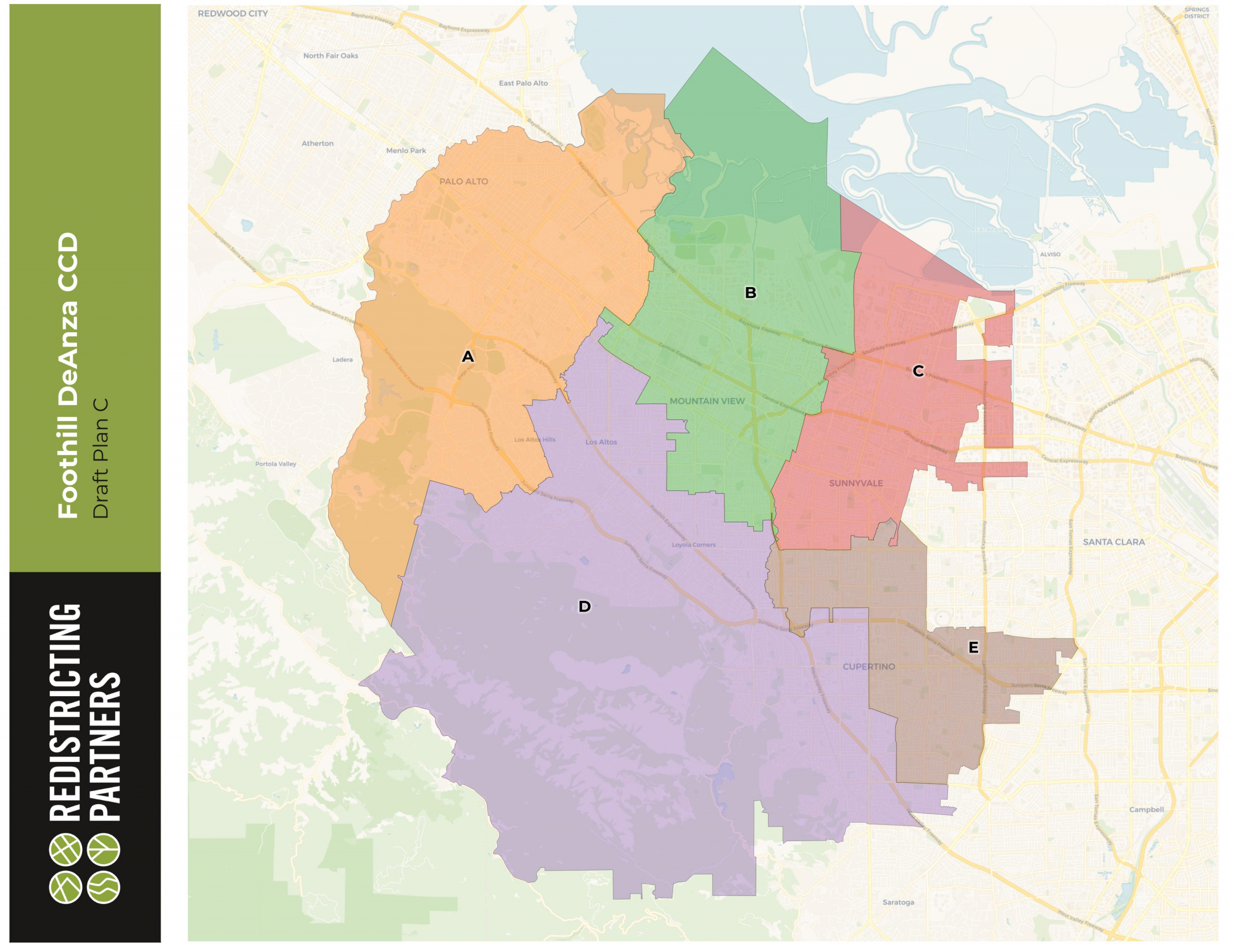The Foothill-De Anza Community College District board of trustees has whittled its options for how to divide the district into areas for trustee elections, advancing two draft maps at a Monday, Dec. 13, board meeting.
The board voted 4-1 to advance maps A and C, which are focused on city and school district boundaries, respectively. The board left behind Map B, which used an amalgamation of city and school district lines to draw trustee areas.
The community college district is in the process of switching from at-large trustee elections, in which all the district's voters have a chance to elect the full board, to area-based trustee elections, in which the district is divided into five subareas, with the residents of each district picking their own representative.
The board is set to vote on the final map in February, with the switch to trustee areas taking place over two election cycles, starting in November 2022.
Redistricting Partners, the district's consultant, drew three draft maps for the board to consider. Map A prioritizes city boundaries in drawing trustee areas, Map B considers both city and school district lines, and Map C focuses on school districts.
At a public hearing Monday night, the board voted to move forward with maps A and C, which trustees generally said they found more clear than trying to combine city and school district boundaries. Trustee Peter Landsberger called Map B an "unwieldy compromise."
Trustee Gilbert Wong dissented, expressing a preference for maps B and C but saying he wanted to wait until a future meeting to formally narrow down the options.
This marks the first time since its founding in 1957 that the district will change the way its trustees are elected. The board voted in 2019 to make the switch in the face of a lawsuit threat over claims of racially polarized voting in the current at-large system. The board disputed that characterization but acquiesced to the change, noting in a resolution that the California Voting Rights Act "strongly favors" area-based elections over at-large ones.
In drawing trustee areas, the board is required to consider a number of legal requirements, including creating districts that are of roughly equal population; compact; contiguous; follow existing city, county and local government boundary lines as much as possible; and consider "communities of interest," which can include racial or language minority groups, as well as features like neighborhood associations or areas with shared community facilities, according to information from the district.
Paul Mitchell of Redistricting Partners told the board Monday that legally, race can't be the predominant factor in drawing trustee areas unless it is possible to create a "majority-minority" district where over 50% of the district is from a particular minority group.
The community college district spans from Palo Alto south into a small part of San Jose. In total, roughly 450,000 people live within the district's boundaries, 249,000 of whom are citizens who are over 18 years old. Among the voting eligible population, 35.4% are Asian, 8.8% are Latino, 1.9% are Black and 53.9% are white or another ethnic group, according to data from Redistricting Partners.
Draft maps A and C both include a district where the majority of the voting eligible population is Asian, while Map B includes two districts that are just shy of 50%.
The trustee areas also need to be of roughly equal size. Map A has a 6.8% deviation between its largest and smallest trustee areas, while Map B sits at 7.4% and Map C has a 5.4% deviation.
Board President Patrick Ahrens encouraged his colleagues to narrow down their list of options Monday night so that fewer maps would be under consideration at their next meeting, which is slated for Jan. 10.
Wong pushed back on that idea, saying that as this was the first meeting where actual maps were being considered, he felt it was too early to begin removing options and that the board should wait for more public input.
"I think it's a little bit premature to say what we like because we just only had one person that came (to speak tonight) and then maybe a couple of other emails," Wong said.
Ahrens acknowledged Wong's desire to wait on taking a formal vote but said that, since the district has already held two meetings about the switch to area-based elections and led a broad public outreach campaign, it was time to move ahead.
"We are at Dec. 13 and we have a legal requirement to get a map drawn and completed by February," Ahrens said. "We need to be starting to make decisions."
Wong also questioned whether the discussion at Monday's meeting was agendized in such a way that the board could take a vote, but Ahrens said the fact that it was a public hearing meant the trustees could take action.
Wong also disagreed with his colleagues' preference for maps A and C. Instead, he favored maps B and C, with a particular interest in Map C, which is based on school district boundaries, and specific concern about Map A, which is based on city boundaries.
Wong questioned how cities were divided up in the draft maps. In particular, he asked Mitchell why Cupertino was split between multiple trustee areas in all three maps and why Los Altos and Mountain View were separated, with Los Altos in the same district as a part of Cupertino.
Prior to being elected to Foothill-De Anza's board, Wong served for nine years on the Cupertino City Council.
Mitchell said that Cupertino's size and geographic location within the district made it "impossible" not to divide the city. Cupertino is large enough to be its own trustee area, Mitchell said, but sits near the edge of the district, with slivers of Saratoga and San Jose to its south and east. Trustee areas must be contiguous and keeping Cupertino in one piece would mean cutting those other two cities off from the rest of the district, Mitchell said.
As for Mountain View and Los Altos, Mitchell said their placement in the center of the district makes it difficult to draw a map which combines them, without creating a "donut" shape, where the center area is prioritized and the other areas are split up around it.
Thus far, the plan to switch to trustee areas has received a relatively muted public response, with just one community member turning out to speak at Monday's meeting. A representative from the local chapter of the League of Women Voters addressed the board, praising the trustees for a fair and transparent process.
The district has stressed its interest in engaging the community in drawing trustee areas, with a website set up to explain the switch, advertisements in local newspapers and the ability for the public to submit suggested maps using an interactive online tool. The district also released a communities of interest survey earlier this fall that garnered 17 responses, district spokesperson Becky Bartindale said.
According to Mitchell, the public feedback was used in creating the draft maps, which he presented to the board on Monday.






Comments